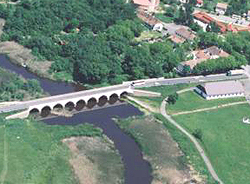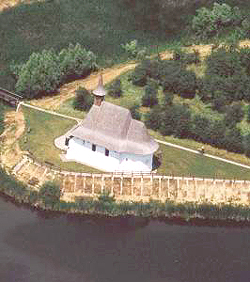Popular destinations nearby
Debrecen,
Hajdúszoboszló,
Hortobágy,
Nyíregyháza,
Szolnok,
Balmazújváros,
Berettyóújfalu,
Csaroda,
Csenger,
Cserkeszőlő,
Derecske,
Fehérgyarmat,
Hajdúböszörmény,
Hajdúdorog,
Hajdúhadház
|
The region has the typical characteristics of the Hungarian Plain with tiny villages and farms preserving traditions, towns rich in cultural values, thermal baths and rare natural treasures. It is not only Hortobágy where visitors to the north of the Plain can find the romance of the "puszta". The centre of the region is Debrecen, which is also the seat of county Hajdú-Bihar, but the region includes counties Jász-Nagykun-Szolnok and Szabolcs-Szatmár-Bereg, too. The huge territory has unified characteristics: the plain land is rarely broken by hills or hillocks and these hills are not higher than some hundred metres.
In spite of this unity, the landscape is not monotonous: it is divided by rivers, first of all, by Berettyó and Tisza, in many places fields alternate with orchards and vineyards. In the regions Nagykunság and Hortobágy there are a lot of so-called Cuman hills (kunhalom) - these man-made hillocks were probably burial places. The former flood areas have been filled up but in the region Sárrét fish skeletons can still be found in deeper layers. As a result of river control, dead channels were created, which are rich in fish and have unique flora and fauna including special birds, or even ermines and otters. In the place of the earth excavated in river control, so-called "navvy forests" or "navvy holes" can be found - these are almost the only habitats for the chrysanthemum of the protected bank of the river Tisza or for the horse radish of Debrecen. Animal breeding has a centuries' long tradition in the territory, it is preserved in its original form in the Hortobágy National Park, which is part of the World Heritage. In the formerly boggy territories of the Szatmár-Bereg plain several brooks and lakes provide shelter for the viper, the lizard or the bee-hawk.
The region is rich in cultural relics: in Szabolcs you can find an earthwork from the age of the Hungarian conquest, where national assemblies were held in the age of Árpád; the churches in Csaroda and in Csengersima were built in the Romanesque period, while the Calvinist church with the belfry in Nagyszekeres is a Gothic masterpiece. The neoclassical Great Church in Debrecen, where the independence of Hungary was declared in 1849, is the symbol of the civic town and that of Hungarian Calvinism. Secular buildings are also worth visiting including the horse-driven mill built of wood in Tarpa or the watermill with three undershot wheels in Túristvándi. The noblemen built beautiful mansions and manor-houses here: the Renaissance Vay mansion in Vaja and the castle of Kisvárda were scenes of historical events. Other interesting sights include the district seat of Hajdúböszörmény, the central building of the University of Debrecen with the park or the Almásy mansion in Törökszentmiklós. Lodgings in Northern Great Plain:
Sights in Northern Great Plain: |
Northern Great Plain map nagyítása >>
in Northern Great Plain:
|
|
|
Hungary - Northern Great Plain |
|
|
|
||
|
Wednesday, 7. January 2026. - 15:36:32 |
||


